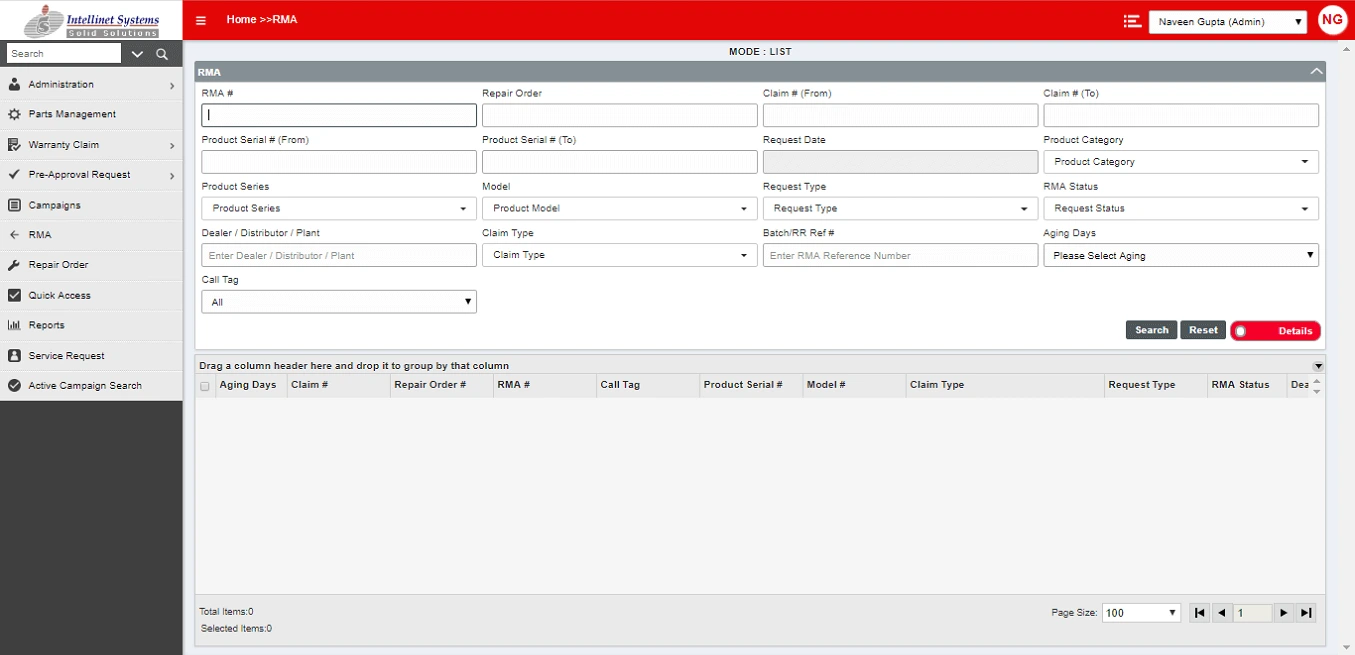
Return Merchandise Authorization (RMA) is a crucial component of the aftermarket supply chain, especially in industries involving complex machinery. Contrary to the standard product return process, RMA in this context is an OEM-sanctioned spare part replacement process. This process is initiated by dealers or retailers and the OEM bears the entire expense of the product replacement. This includes logistics charges, replaced part costs, and any other associated costs.
For dealers, an efficient RMA process ensures spare parts are replaced seamlessly while reducing downtime and improving overall service quality. For OEMs, on the other hand, a well-structured RMA system improves cost control and regulates logistics. Without an effective RMA process, both OEMs and dealers encounter financial losses, operational inefficiencies, and poor customer satisfaction.
This article explores how Return Merchandise Authorization works, its benefits for dealers and OEMs, and best practices for managing an efficient RMA process.
How Return Merchandise Authorization Works?

The return merchandise authorization is a structured approach to replacing defective or incorrect spare parts approved by OEMs. This process involves multiple stakeholders, including dealers, retailers, OEMs, and logistic partners, which ensures the replacement process is seamless and cost-effective.
Steps Involved in the RMA Processing
Here are the steps involved in an effective RMA processing:
- Dealer Identifies a Faulty or Required Replacement Part: The dealer detects an issue with a part due to a defect, warranty failure, or standard replacement requirement.
- Dealer Submits an RMA Request: The request includes details such as part number, issue description, and supporting documentation. This submission is made through an RMA module integrated with the OEM’s spare parts or warranty management system.
- OEM Reviews and Sanctions the Replacement: The OEM evaluates the request, verifies warranty or replacement eligibility, and approves the RMA. The technical support teams may conduct further inspection, if necessary.
- Spare Part is Shipped, and OEM Covers All Costs: The approved spare part is dispatched to the dealer. The OEM bears logistics, replacement, and associated costs, ensuring the least financial burden on the dealer.
- Dealer Installs the Replacement: The faulty part is generally scrapped or may be returned based on OEM policies. The dealer completes the installation and documents the replacement in the system.
Challenges Without an Effective RMA Process

An inefficient RMA process results in inefficiencies, delays in replacement approvals, and rising costs. Both OEMs and dealers face several challenges due to the disorganized handling of RMA requests.
Below is a list of such challenges faced by dealers and OEMs.
Challenges For Dealers
- Inventory Mismatches: A lack of visibility into approved vs. pending RMAs results in overstocking or part shortages.
- Delayed Approvals Lead to Service Disruptions: Without a fast approval process, dealers struggle to meet service commitments, leading to customer dissatisfaction.
- Higher Costs: If the OEM does not cover replacement expenses promptly, dealers may have to bear interim costs.
Challenges For OEMs
- Lack of Visibility into Part Failures: An inefficient RMA process limits insights into recurring part failures, which can impact product quality improvements.
- Unstructured Cost Management: Without a centralized system, tracking replacement expenses becomes difficult, leading to budget overruns.
- Logistics Inefficiencies: Delayed or mismanaged shipments increase operational costs and disrupt supply chains.
A well-integrated RMA system reduces these challenges and ensures faster RMA approvals. It also enables OEMs to efficiently improve cost control and handle spare parts replacement.
How RMA Benefits Dealers and OEMs

In order to have a fully functional Return Merchandise Authorization, the process must be well-structured and efficient. An organized and effective RMA process offers remarkable advantages to both dealers and OEMs.
Let’s have a glance at the benefits of RMA for dealers and OEMs:
For Dealers
- Faster Approvals Reduce Downtime: Quick response times from OEMs help dealers keep their service commitments.
- Zero Financial Burden: Since the OEM covers all replacement costs, dealers don’t have to allocate additional budgets for spare part replacements.
- Seamless Spare Parts Management: A streamlined RMA system improves inventory tracking and reduces errors in spare parts handling.
For OEMs
- Better Cost Control: Structured approvals avoid unnecessary replacements, reducing overall operational expenses.
- Data Insights on Part Failures: A strong RMA system provides analytics on recurring part defects, helping OEMs enhance product quality.
- Optimized Logistics Management: When integrated with supply chain systems, RMAs streamline the shipping and tracking of replacement parts. This helps OEMs in reducing delays and inefficiencies.
A streamlined and efficient RMA process facilitates both OEMs and dealers to improve their operational efficiency, reduce costs, and enhance service quality.
Best Practices for Managing an Effective RMA Process

Dealers and OEMs should adopt certain practices to streamline the RMA process. These best practices not only maximize the benefits of return merchandise authorization but also improve overall efficiency.
- Regulate Approval Criteria: To avoid unnecessary or fraudulent replacements, draft clear guidelines such as when to approve or reject an RMA.
- Real-Time Tracking of RMA Requests: Implement digital tracking solutions for complete visibility of replacement requests.
- Clear Communication Between OEMs, Dealers, and Logistics Teams: A seamless coordination within the system helps prevent mismanagement and replacement delays.
- Data-Driven Decision-Making: Use historical data to identify trends in parts failure to improve replacement policies.
- Integration with Inventory and Service Management Systems: Unify the RMA process with service and inventory databases to maintain accurate records and improve efficiency.
Executing these practices enables OEMs to optimize RMA processes and reduce operational costs. It also helps in enhancing dealer and customer satisfaction.
Final Thoughts
Return Merchandise Authorization is a significant segment in dealer-OEM collaboration that ensures cost-efficient spare parts replacements and enables seamless service management. Implementing a streamlined RMA system facilitates OEMs to control costs, improve logistics, and gain valuable insights. It also helps dealers by enabling faster approvals, better inventory management, and reduced costs.
A well-structured RMA module enables businesses to prevent financial losses, avoid inefficiencies, and improve aftersales support. To maintain a competitive edge, OEMs and dealers should execute automated RMA solutions to streamline processes. It also enhances operational transparency and overall efficiency.
To optimize your Return Merchandise Authorization process or learn more about the process, connect with our experts.


























